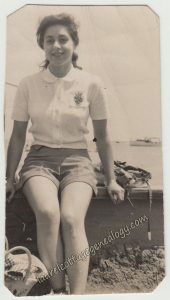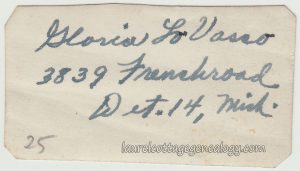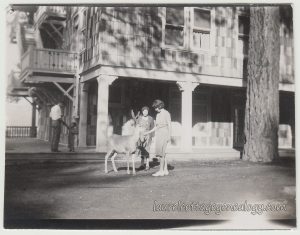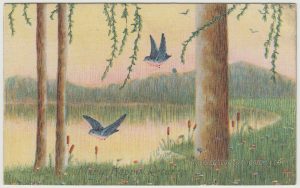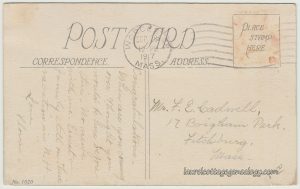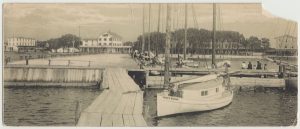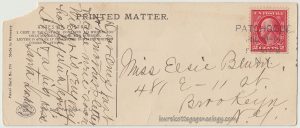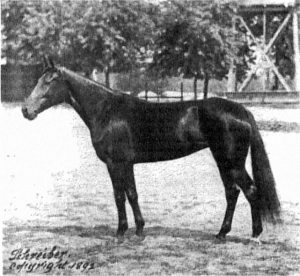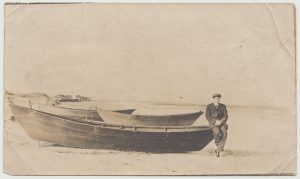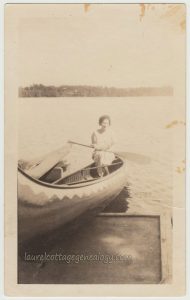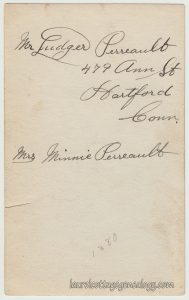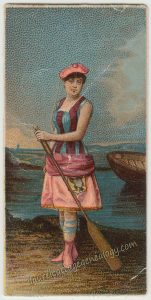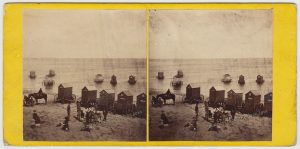
Stereograph, Portobello Beach, Scotland, circa 1860s – 1890s. Possibly 1860s.
Price: $20.00 Size: About 6 and 3/4 x 3 and 1/4″ including matting
Bathing machines at Portobello Beach, Scotland
Portobello was a coastal town situated three miles east of Edinburgh’s city center, and today is a suburb of that city.
Here’s two of the same image mounted on cardboard to make a stereograph, also commonly called stereo view, the type used for 3-D viewing (or an approximation of) that was popular “in waves” (per Wikipedia’s entry and no pun intended 😉 ) from around 1870 – 1920.
Various historical notices and letters can be found in The Caledonian Mercury (Edindburgh, Scotland) on the subject of bathing at Portobello. A little background info: Men had been used to bathing in the nude, both sexes used the bathing machines, women were segregated from the men, and bathing laws were changing in the 1860s. Here’s a few newspaper clippings – below left, appearing July 17, 1851 and on the right, dated June 23, 1862:
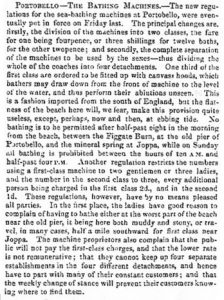
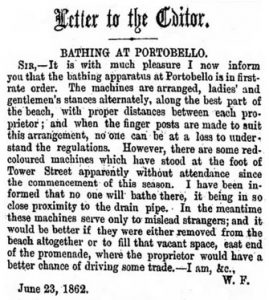
Below, another letter to the editor, dated April 4, 1863, and signed “Common Sense.”
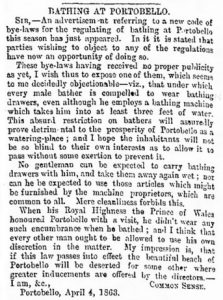
Forsyth
Note the surname Forsyth on a few of the conveyances, which we discovered was one of the rental companies at the time the photo was taken. (Could the W. F. in the 1862 letter to the editor have been a Forsyth?) Other machines in the photo show different company names, but they’re too blurred to make out.
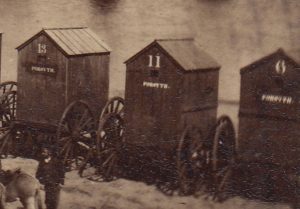
Below, a Forsyth’s baths ad clipped from The Caledonian Mercury, August 21, 1861, which leads one to think that our stereograph photo may have been from the 1860s, though more research would need to be done to hopefully find how long the company was in the machine rental business.
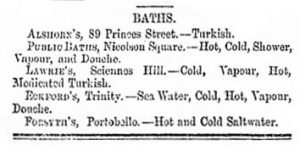
High topper gents
Also notable, are two men gazing back at the camera, sporting high top hats. Note that the hat on the right is what we think of as “stovepipe” as in Abe Lincoln, but the other (or maybe too much imagination in play here) looks like it might be of the variety that was more rounded on the sides and top. The term “chimney pot” was also used, but it seems both nicknames have come to be used interchangeably, and understandably so, because one can find photos of chimney pots that have either straight, convex or concave sides. But we’ll stop ourselves here from going off on a hat tangent, (a whole other realm….hat history, hats and public opinion, hats and politics, how fashion influenced politics, etc.)
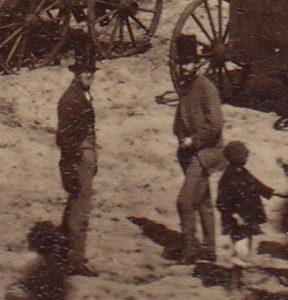
Sources: Stereoscope. n.d. https://en.wikipedia.org/wiki/Stereoscope (accessed August 31, 2019).
Bathing machine. n.d. https://en.wikipedia.org/wiki/Bathing_machine (accessed August 31, 2019).
“Portobello – The Bathing Machines” The Caledonian Mercury, July 17, 1851. Thursday, p. 2. (Newspapers.com).
“Letter to the Editor” The Caledonian Mercury, June 24, 1862. Tuesday, p. 2. (Newspapers.com).
“Bathing at Portobello” The Caledonian Mercury, April 6, 1863. Monday, p. 2. (Newspapers.com).
“Baths” The Caledonian Mercury, August 21, 1861. Wednesday, p. 2. (Newspapers.com).
Top hat. n.d. https://en.wikipedia.org/wiki/Top_hat (accessed August 31, 2019).

